Belenus: Mighty Gaulish God Of Light Often Associated With Lugh And Apollo
A. Sutherland - AncientPages.com - The Gaulish god Belenus (Belinus/Belenos), whose worship goes back to deep antiquity, was a widely recognized deity associated with healing, springtime festival, protection, and, on occasion, with the sun.
Continental god Belenus. Credit: Adobe Stock - Superhero DriGGa
His name is probably a Latinization of the god Beli worshiped by the Celts who inhabited the European continent before being driven away by the Romans.
"Great and powerful Belenus—
we honor you this day—
and thank you for your gifts.
You are known by many names.
You are the light over the crops in the fields,
the heat that warms the earth,
the hope that springs eternal,
the bringer of life..."
Related to Apollo But Not In Celtic Culture
In ancient depictions, this deity was recognized as the equivalent of the Roman god Apollo, a god of light and the sun, but sometimes associated with the god Lugh.
Belenus was often depicted riding the sun across the sky in a horse-drawn chariot. Other depictions show him riding a horse and throwing thunderbolts while using his wheel as a shield. A wheel and head with solar rays and halos are also associated with Belenus. The lines surrounding Belenus’s head could probably symbolize the warm, glowing rays of light coming from the sun god.
As we know, the god Apollo acquired power over medicine, healing, and disease after he was established at Delphi. In Celtic culture, however, Belenus was associated with health, fountains, health, and the pastoral lifestyle.
Credit: Hans Adam Weissenkircher - 1685 - Public Domain
His other associations were with the symbols of the phallic-shaped stone, the bull, the oak, and the horse. He was known as one of the Celtic high gods in Ireland, Scotland, Wales, France, Italy, Spain, England, and other locations. He had many names similar to Belen, Belinus, Bellinus, and Bel, depending on tradition, language, and place of worship.
His attributes included the capacity for healing, which earned him the award of being the god of medicine and a divine healer.
Due to his healing functions, he was worshiped as ‘the Master of Power’ or ‘the Powerful One’ at healing waters, including Aquae Borvonis (Bourbon-les-Bains) in France, and water sanctuaries, such as sacred springs at Sainte-Sabine, Burgundy, France.
In the areas conquered by the Roman Empire, he was identified with Apollo. This association was not due to solar imagery but rather healing capabilities.
In various records, Belenus also appears as a protective deity of livestock and crops and areas related to agricultural activities. In this ritual, both cattle and crops were purified to ensure prosperity for the following year. This protection ritual was held in honor of this deity.
Traces Of His Worship Found Mostly In Italy And France
Inscriptions dedicated to Belenus were found at many sites. He was worshiped among the Illyrians, in central and southern Gaul, in the eastern Alps, and in Aquileia (North Italy), where scholars identified as many as fifty-one of them. In the 3rd century, this god was the city's patron deity and the most popular divinity, according to Aelius Herodianus, one of the most celebrated grammarians of Greco-Roman antiquity. Herodianus in “The Roman Histories” equated Belenus with Apollo; however, it was only confirmed in a few inscriptions.
Herodianus in “The Roman Histories” equated Belenus with Apollo; however, it was only confirmed in a few inscriptions. Here, we see a vase dedicated to God Belenus exhibited at the Marseille history museum. Credit: Rvalette - CC BY-SA 4.0
Herodianus (Herodian) writes that the god Belenus appeared above a battlefield in Aquileia, Italy. The emperor Maximinus besieged the city in 238, but oracles testified that the city would be protected by Belenos, who was later attested to have been seen hovering over the soldiers. Aquileia was a very tough city; it was defended by the former consuls Crispinus and Menophilus, and it did withstand the siege, outlasting the emperor, who was assassinated within four months.
Another author, Iulius Capitolinus (300 AD -350 AD), referred to Belenus as Apollo or the Sun.
Traces of his worship in ancient times were found in other places in Europe as well. Most probably, early European settlers had their ritual site dedicated to Belenus at a site in New Hampshire called Mystery Hill, where a stone tablet with an Ogham inscription "Dedicated to Bel" on it was discovered in 1967 and translated by Dr. Barry Fell, president of the Epigraphic Society.
“The ancient author Apollonius relates a Celtic story of a stream formed by the tears of Apollo Belenus when he was forced from heaven by his father; as Apollo was the Greek sun divinity, this textual evidence strengthens the argument that Belenus had solar connections. In Britain, a hero Belinus was mentioned by the early historian Geoffrey of Monmouth as the twin to Brennius, the two went to war over the throne but ultimately agreed to share power.
The continental god Belinus is not described as warlike, so despite the similarity in names, it is unclear that the same figure is intended.” 1
Updated on March 23, 2024
Written by – A. Sutherland AncientPages.com Staff Writer
Copyright © AncientPages.com All rights reserved. This material may not be published, broadcast, rewritten or redistributed in whole or part without the express written permission of AncientPages.com
Expand for references- Patricia Monaghan- The Encyclopedia of Celtic Mythology and Folklore
- Scott Littleton, Gods, Goddesses, and Mythology, Volym 11
- Geoffrey of Monmouth, The History of the Kings of Britain
- Green, Miranda. Dictionary of Celtic Myth and Legend
More From Ancient Pages
-
 Were Medieval Philosophers Familiar With The Multiverse Theory?
Featured Stories | Oct 4, 2018
Were Medieval Philosophers Familiar With The Multiverse Theory?
Featured Stories | Oct 4, 2018 -
 LIDAR Discovery Of Ancient City With 10,000 Mounds On The Pacific Island Of Tongatapu
Archaeology | Apr 16, 2024
LIDAR Discovery Of Ancient City With 10,000 Mounds On The Pacific Island Of Tongatapu
Archaeology | Apr 16, 2024 -
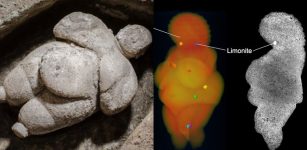 Mystery Of The 30,000-Year-Old Venus Of Willendorf Solved?
Archaeology | Feb 28, 2022
Mystery Of The 30,000-Year-Old Venus Of Willendorf Solved?
Archaeology | Feb 28, 2022 -
 Summer Solstice Festivals Around The World – Midsummer Celebration Is An Ancient Tradition Still Alive
Ancient Traditions And Customs | Jun 21, 2024
Summer Solstice Festivals Around The World – Midsummer Celebration Is An Ancient Tradition Still Alive
Ancient Traditions And Customs | Jun 21, 2024 -
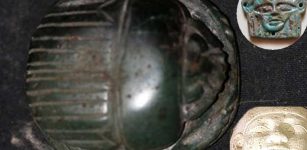 Amulets, Figurines Discovered In Recently Unearthed Limestone Sarcophagus In Minya, Egypt
Archaeology | Oct 15, 2020
Amulets, Figurines Discovered In Recently Unearthed Limestone Sarcophagus In Minya, Egypt
Archaeology | Oct 15, 2020 -
 10 Norse Gods Who Vikings Gained Strength From
Featured Stories | May 14, 2018
10 Norse Gods Who Vikings Gained Strength From
Featured Stories | May 14, 2018 -
 17 Mysterious Miniature Coffins In Scotland Remain An Unsolved Enigma
Artifacts | Feb 24, 2018
17 Mysterious Miniature Coffins In Scotland Remain An Unsolved Enigma
Artifacts | Feb 24, 2018 -
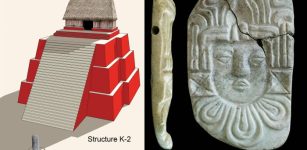 Fire-Burning Event At The Maya Kingdom Of K’anwitznal Was A Reaction To Regime Change
News | Apr 19, 2024
Fire-Burning Event At The Maya Kingdom Of K’anwitznal Was A Reaction To Regime Change
News | Apr 19, 2024 -
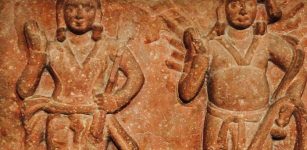 Agni: Hindu God Of Divine Illumination And One Of The Three Supreme Deities Of Vedic Lore
Featured Stories | May 3, 2018
Agni: Hindu God Of Divine Illumination And One Of The Three Supreme Deities Of Vedic Lore
Featured Stories | May 3, 2018 -
 Enigmatic Ancient Kingdom Of Thulamela Created By Mysterious Shona People
Civilizations | Dec 28, 2016
Enigmatic Ancient Kingdom Of Thulamela Created By Mysterious Shona People
Civilizations | Dec 28, 2016 -
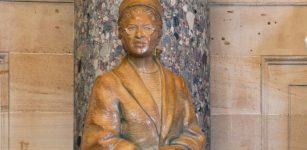 On This Day In History: Rosa Parks’ Act Of Defiance And The Montgomery Bus Boycott – On Dec 1, 1955
News | Dec 1, 2016
On This Day In History: Rosa Parks’ Act Of Defiance And The Montgomery Bus Boycott – On Dec 1, 1955
News | Dec 1, 2016 -
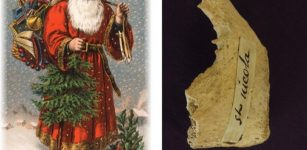 Examined Ancient Bone Suggests Santa Claus Was Real
Archaeology | Dec 8, 2017
Examined Ancient Bone Suggests Santa Claus Was Real
Archaeology | Dec 8, 2017 -
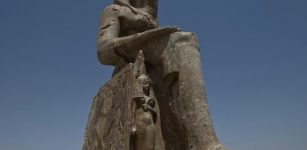 Remarkable Massive Statues Of Pharaoh Amenhotep III Discovered In Luxor
Archaeology | Mar 25, 2014
Remarkable Massive Statues Of Pharaoh Amenhotep III Discovered In Luxor
Archaeology | Mar 25, 2014 -
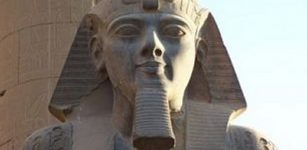 On This Day In History: Ramesses II Became Pharaoh Of Ancient Egypt – On May 31, 1279 BC
News | May 31, 2016
On This Day In History: Ramesses II Became Pharaoh Of Ancient Egypt – On May 31, 1279 BC
News | May 31, 2016 -
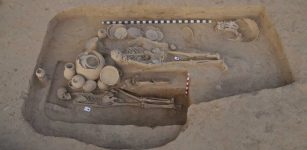 Scientists Use Ancient DNA To Explore Early European Adaptation
DNA | Nov 27, 2024
Scientists Use Ancient DNA To Explore Early European Adaptation
DNA | Nov 27, 2024 -
 Ancient Symbol Fleur-de-lis: It’s Meaning And History Explained
Ancient Symbols | May 19, 2020
Ancient Symbol Fleur-de-lis: It’s Meaning And History Explained
Ancient Symbols | May 19, 2020 -
 Legendary Mount Penglai Where The Eight Immortals Reside
Chinese Mythology | Feb 20, 2018
Legendary Mount Penglai Where The Eight Immortals Reside
Chinese Mythology | Feb 20, 2018 -
 Ancient Objects Used In Unknown Celtic Ritual Discovered In Polish Lake
Archaeology | Jul 22, 2024
Ancient Objects Used In Unknown Celtic Ritual Discovered In Polish Lake
Archaeology | Jul 22, 2024 -
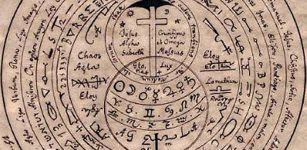 Magical Manuscripts With Thousands Of Ancient Spells Discovered In Germany
Archaeology | Aug 28, 2017
Magical Manuscripts With Thousands Of Ancient Spells Discovered In Germany
Archaeology | Aug 28, 2017 -
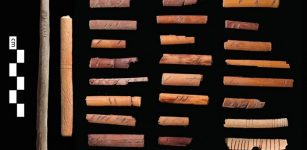 America’s First Casino Was Created By The Promontory Culture 700 Years Ago
Ancient History Facts | Apr 30, 2016
America’s First Casino Was Created By The Promontory Culture 700 Years Ago
Ancient History Facts | Apr 30, 2016



